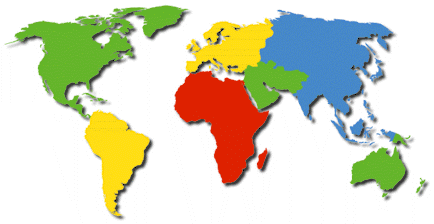


Definitions of different kinds of Language Varieties:
- Pidgin:
A pidgin is a new language which develops in situations where speakers of different languages need to communicate but don't share a common language. The vocabulary of a pidgin comes mainly from one particular language (called the 'lexifier'). An early 'pre-pidgin' is quite restricted in use and variable in structure. But the later 'stable pidgin' develops its own grammatical rules which are quite different from those of the lexifier.
Once a stable pidgin has emerged, it is generally learned as a second language and used for communication among people who speak different languages. Examples are Nigerian Pidgin and Bislama (spoken in Vanuatu).
- Creole:
When children start learning a pidgin as their first language and it becomes the mother tongue of a community, it is called a creole. Like a pidgin, a creole is a distinct language which has taken most of its vocabulary from another language, the lexifier, but has its own unique grammatical rules. Unlike a pidgin, however, a creole is not restricted in use, and is like any other language in its full range of functions. Examples are Gullah, Jamaican Creole and Hawai`i Creole English.
Note that the words 'pidgin' and 'creole' are technical terms used by linguists, and not necessarily by speakers of the language. For example, speakers of Jamaican Creole call their language 'Patwa' (from patois) and speakers of Hawai`i Creole English call theirs 'Pidgin.'
- Regional
dialect:
A regional dialect is not a distinct language but a variety of a language spoken in a particular area of a country. Some regional dialects have been given traditional names which mark them out as being significantly different from standard varieties spoken in the same place. Some examples are 'Hillbilly English' (from the Appalachians in the USA) and 'Geordie' (from Newcastle upon Tyne in the UK).
- Minority
dialect:
Sometimes members of a particular minority ethnic group have their own variety which they use as a marker of identity, usually alongside a standard variety. This is called a minority dialect. Examples are African American Vernacular English in the USA, London Jamaican in Britain, and Aboriginal English in Australia.
- Indigenized
variety:
Indigenized varieties are spoken mainly as second languages in ex-colonies with multilingual populations. The differences from the standard variety may be linked to English proficiency, or may be part of a range of varieties used to express identity. For example, 'Singlish' (spoken in Singapore) is a variety very different from standard English, and there are many other varieties of English used in India.
|
and the Association for Supervision and Curriculum Development Contact: Jeff Siegel <jsiegel@une.edu.au> or Ermile Hargrove <Ekhargrove@aol.com> |

